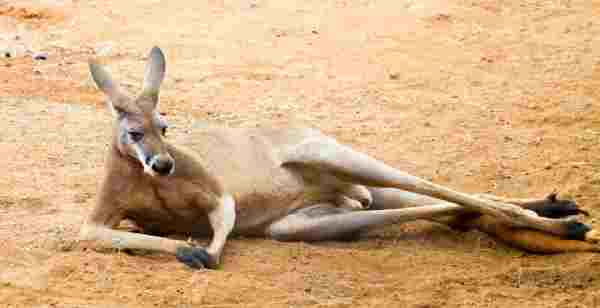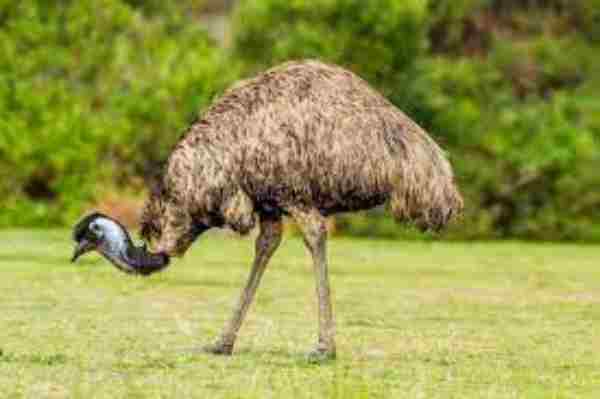Australia’s vast and diverse landscape is not only home to unique ecosystems but also to an array of fascinating wildlife. Among these, the Australian savanna stands out as an enchanting and enigmatic biome, boasting a rich tapestry of creatures adapted to its challenging conditions.
In this article, we embark on a journey into the heart of the Australian savanna Animals, where we will delve into the lives, behaviors, and remarkable adaptations of its resident animals.
Definition and Description of the Australian Savanna Ecosystem

The Australian savanna is a unique and captivating ecosystem that spans approximately one-third of the Australian continent. Characterized by its vast grasslands, scattered trees, and distinct wet and dry seasons, this biome experiences a climate of extremes.
During the dry season, which can extend for several months, the land becomes parched, and water sources dwindle. In contrast, the wet season brings heavy rainfall, transforming the savanna into a lush, green landscape. This cycle of extremes has shaped the flora and fauna that call the Australian savanna home, resulting in a rich tapestry of life adapted to survive in these challenging conditions.
Significance of the Australian Savanna in Terms of Biodiversity
The Australian savanna is of paramount significance in terms of biodiversity. Despite covering only a fraction of the continent, it harbors a remarkable variety of plant and animal species. Its unique mix of wet and dry seasons, coupled with diverse microhabitats, supports an abundance of life.
This ecosystem is a hotspot for numerous endemic and specialized species, showcasing Australia’s exceptional evolutionary history. Additionally, the Australian savanna serves as a vital habitat for migratory birds and provides crucial breeding grounds for many species. The interconnected web of life within the savanna underscores its pivotal role in maintaining ecological balance and preserving biodiversity.
The Australian Savanna: A Biodiversity Hotspot
The Australian savanna stands as a remarkable biodiversity hotspot, teeming with a plethora of life forms. Its distinctive climatic patterns and heterogeneous landscape give rise to diverse habitats, each hosting a unique set of species.
This region boasts a staggering array of plant life, including acacias, eucalypts, and spinifex grasses, all uniquely adapted to thrive in the challenging conditions of the savanna. In turn, this profusion of plant life sustains an impressive variety of wildlife.
The savanna is home to iconic marsupials like kangaroos, wallabies, and wombats, as well as numerous bird species, reptiles, and insects. Notably, it provides habitat for several endangered and rare species, making its conservation of global importance.
The Australian savanna’s role as a biodiversity hotspot highlights the urgent need for its protection and sustainable management to safeguard its unique and irreplaceable flora and fauna.
Iconic Animals of the Australian Savanna
Kangaroos and Wallabies:

Kangaroos and wallabies are quintessential Australian marsupials that dominate the grassy landscapes of the savanna. Kangaroos, with their distinctive hopping gait, and wallabies, their smaller cousins, are uniquely adapted to the savanna’s challenges. These herbivorous marsupials play a vital role in shaping the ecosystem by controlling vegetation and providing sustenance for predators. Their presence symbolizes the rugged beauty and adaptability of the Australian savanna.
Koalas

Koalas, although primarily associated with eucalyptus forests, also inhabit the outskirts of the Australian savanna. These iconic marsupials rely exclusively on eucalyptus leaves for sustenance and are known for their endearing appearance. Their presence in the savanna’s fringe regions underscores the importance of preserving diverse habitats for these arboreal ambassadors, as they play a critical role in the region’s biodiversity.
Emu

The emu, the largest flightless bird globally, is a charismatic inhabitant of the Australian savanna. Known for its long legs and remarkable speed, the emu thrives in the open grasslands of the savanna. It feeds on a varied diet of plants, insects, and small vertebrates. Emus are not only culturally significant but also ecologically vital as seed dispersers and contributors to the ecosystem’s overall balance.
Wedge-tailed Eagles

Wedge-tailed eagles, with their impressive wingspans and powerful talons, reign as the savanna’s apex aerial predators. These magnificent raptors play a crucial role in maintaining the savanna’s ecological equilibrium by preying on small mammals and birds. Their presence is a testament to the intricate web of life within the savanna, where even the skies are home to remarkable and powerful creatures.
Thorny Devils

Thorny devils, small reptiles with striking, thorn-like scales, are masters of adaptation in the challenging arid zones of the Australian savanna. These remarkable creatures have evolved specialized mechanisms to cope with extreme temperatures and scarce water sources. Their cryptic appearance and unique behaviors make them a captivating emblem of survival in the harsh savanna environment.
Northern Green Tree Frog

The northern green tree frog is a tiny oasis dweller in the savanna, often found near water sources. Its vibrant green coloration and melodic calls make it a charming presence in this arid landscape. These frogs serve as indicators of environmental health, and their reliance on waterholes underscores the importance of preserving these vital resources in the savanna.
Small but Mighty
Beyond the charismatic megafauna, the Australian savanna is teeming with a diverse community of insects and arachnids. Praying mantises, with their predatory prowess, and huntsman spiders, with their formidable size, are among the many fascinating species that contribute to the savanna’s intricate food web. These small but mighty creatures play essential roles in controlling pest populations and maintaining the ecosystem’s delicate balance, highlighting the significance of all levels of life within the savanna’s web of biodiversity.
Conservation Challenges and Efforts
Despite its ecological significance and remarkable biodiversity, the Australian savanna faces several conservation challenges. Habitat loss due to agriculture, urban development, and invasive species poses a significant threat to the delicate balance of this ecosystem. Climate change exacerbates the challenges by altering precipitation patterns and intensifying bushfires.
Conservation efforts in the Australian savanna involve the preservation and restoration of critical habitats, the control of invasive species, and sustainable land management practices. Indigenous communities, with their deep knowledge of the land, play a crucial role in these efforts.
They contribute to sustainable land use practices and maintain cultural connections to the savanna. Collaboration among government agencies, conservation organizations, and local communities is essential to protect the unique biodiversity of the Australian savanna for future generations and ensure its continued role as a global ecological treasure.
Furthermore, the conservation of the Australian savanna also relies on scientific research and monitoring programs. These initiatives help us better understand the complex dynamics of this ecosystem and its response to changing environmental conditions. Researchers study the behavior, habitat preferences, and population trends of key species to inform effective conservation strategies.
Fire management is another critical aspect of preserving the Australian savanna. Controlled burning practices, often conducted in collaboration with Indigenous communities, help reduce the risk of catastrophic wildfires while maintaining the ecological health of the landscape. This approach acknowledges the Indigenous people’s profound connection to the land and their traditional knowledge of fire management.
Australia’s commitment to protecting its unique ecosystems, including the savanna, is exemplified through the establishment of national parks, conservation reserves, and the implementation of conservation laws and regulations. These measures aim to safeguard the natural heritage of the savanna and maintain its ecological integrity.
Final Words
In conclusion, the Australian savanna is not only a remarkable and biologically diverse ecosystem but also a testament to the intricate relationship between humans and nature.
By addressing conservation challenges, respecting Indigenous knowledge, and implementing sustainable practices, we can ensure the long-term survival of the iconic species and unique landscapes that define the Australian savanna. Preserving this biodiversity hotspot is not only a national responsibility but a global imperative in the face of ongoing environmental changes.
Reference:
- http://www.cotf.edu/ete/modules/msese/earthsysflr/savannahA.html
- https://www.ncbi.nlm.nih.gov/pmc/articles/PMC4310295/
- https://kids.nceas.ucsb.edu/biomes/savanna.html
A motivated philosophy graduate and student of wildlife conservation with a deep interest in human-wildlife relationships, including wildlife communication, environmental education, and conservation anthropology. Offers strong interpersonal, research, writing, and creativity skills.










